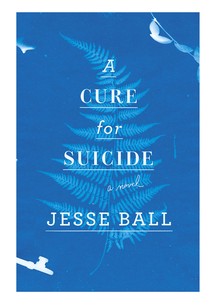The Gripping Novel You Need to Read Before Summer Ends (and More)
Pick it up—and you won't be able to
put it down. We dare you!

9 of 19
A Cure for Suicide
By Jesse Ball
256 pages;
Pantheon
"You are here because you have been very sick. You almost died... You asked for help, and you were brought here. It is my job to make you better," a woman known as "examiner" tells her "claimant" in A Cure for Suicide, Jesse Ball's fifth novel.
The claimant is more husk than man, struggling to relearn how to live. This is a chair, the examiner explains in the village house they share. This is crying. This is how humans behave while listening to a story. Large portions of the text are composed of this kind of instructive dialogue. Ball, also a poet, writes with a restrained specificity, his language so precise and clinical that is compounds into lyricism.
The claimant makes progress learning how to exist in this quiet pocket of the world, even acquiring a temporary name. But then he meets Hilda, a headstrong woman seeking help, who pulls him away from his examiner and demands he ask questions: Who were they in their past lives? Are they now prisoners of their own recovery?
Here the pensive novel hardens into a paranoid thriller in the vein of One Flew Over the Cuckoo's Nest or Total Recall, complete with midnight rendezvous and syringes plunged into forearms. But our protagonist isn't Schwarzenegger, and Ball is interested in a much less explosive form of transformation. Over the course of months (years?), we witness the claimant shrugging off the remnants of his past identity and stepping into a simulacrum of a new one. But is this healing, the novel asks, or a slow-moving act of violence? What is the cost of a life free from pain?
— Natalie Beach
Published 07/14/2015


